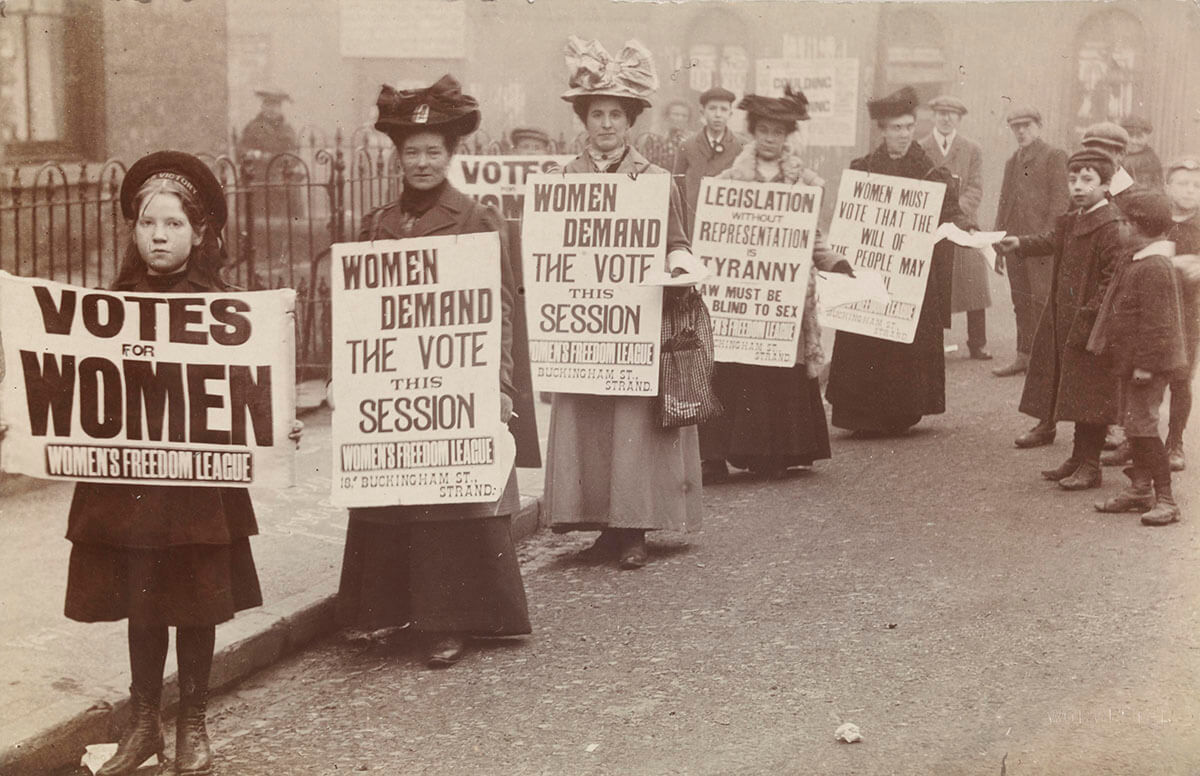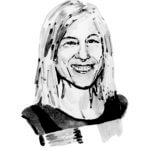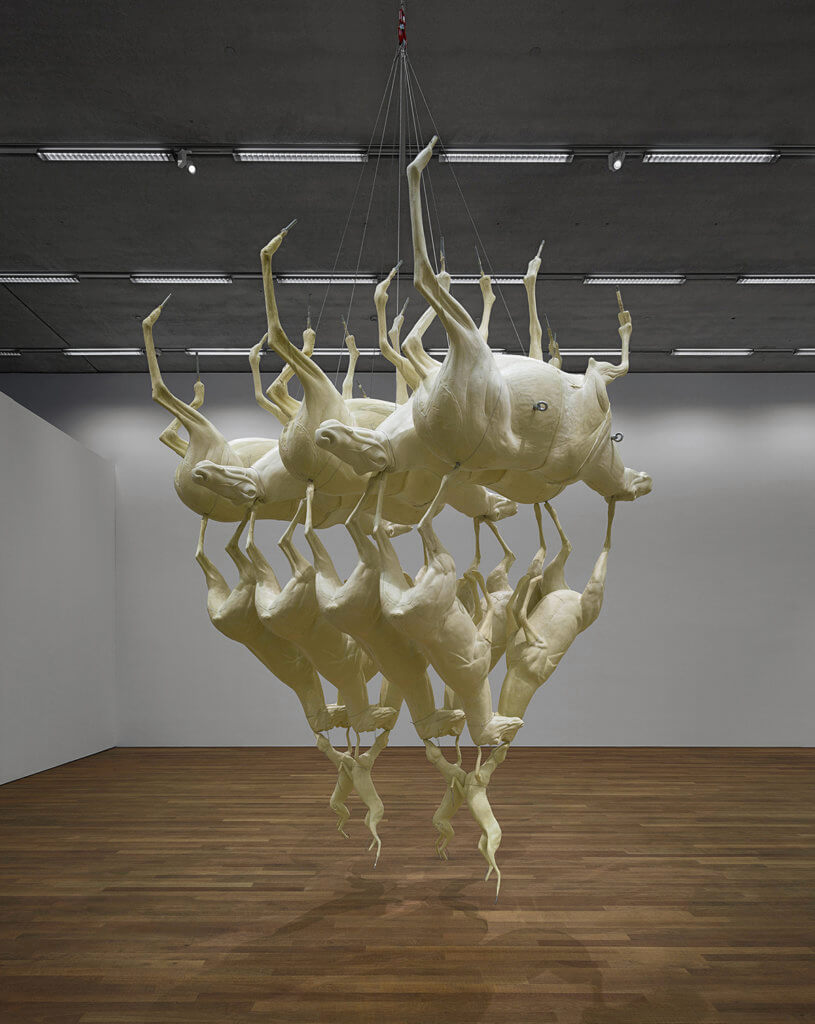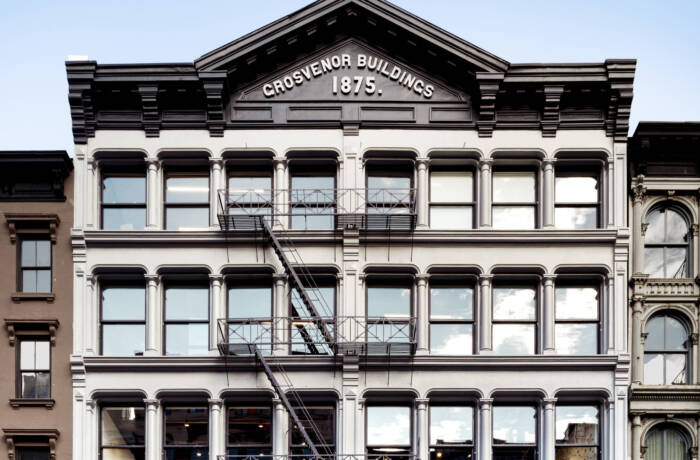
Poster parade organized by the Women’s Freedom League to promote the suffrage message
 As we celebrate the 100 year anniversary since women were given the vote in parliamentary elections, Angela Westwater, one of the art world’s pre-eminent gallerists, reflects upon the great women gallerists who have inspired her, and the changing landscape of the New York gallery scene over the past 40 years
As we celebrate the 100 year anniversary since women were given the vote in parliamentary elections, Angela Westwater, one of the art world’s pre-eminent gallerists, reflects upon the great women gallerists who have inspired her, and the changing landscape of the New York gallery scene over the past 40 years
In the midst of today’s debate on justice and equality for the genders across all industries, the gallery world is a particularly interesting case to think about. While there is actually a large contingent of women gallerists, historically and today, they don’t always get the same level of recognition as their male counterparts. Many powerful women paved the way for the young dealers of today with the risks and bold chances they took. Taking just New York as an example, even as far back as the 1930s and 40s, there were Peggy Guggenheim and Betty Parsons, both of whom championed Abstract Expressionism. Having recently seen the ‘Bacon–Giacometti’ exhibition at the Fondation Beyeler in Basel, I also think about the legacy of Erica Brausen, who started London’s Hanover Gallery in 1946 and gave Bacon his first show the following year.
Follow LUX on Instagram: the.official.lux.magazine
A more immediate example, and one who has inspired me personally, is Virginia Dwan. She had a gallery in Los Angeles in 1959 before moving to New York in 1965. Virginia and I actually met through the artist Robert Smithson, who, in fact, helped me land my first job as a gallery girl in 1971 at the John Weber Gallery. She championed artists such as Sol LeWitt, Robert Ryman, Richard Long and Robert Smithson early in their careers. While the Abstract Expressionist artists were still dominant in the US, and the American scene was frankly a bit parochial, she stood out for being very attentive and receptive to what was going on in Europe, an attitude that my partners Gian Enzo Sperone, Konrad Fischer and I shared when we opened our first space in 1975. Virginia also demonstrated real curiosity, as well as a commitment to not only mounting gallery shows but also sponsoring artists’ projects outside the traditional venues, such as Smithson’s Spiral Jetty in 1970, and aiming to reach a broad audience through accessible means such as artists’ books. Holly Solomon was a similarly fantastic, energetic woman who was a collector before she founded her eponymous gallery in 1975 in the early days of the art scene in SoHo. Partly because she had studied acting, Holly sponsored evenings of artists’ performances along with readings and musical events, which broadened the very definition of art for many people.
So, what did these women and their experiences teach me? Their achievements opened my eyes to the fact that there are different ways of being. They taught me the importance of maintaining as much openness as possible and listening to the artists themselves – see what they have to say, and be open to what you learn along the way in their studios.
Read more: Tracey Emin’s ‘Another World’ at Frieze London
When Sperone Westwater opened, SoHo had far fewer galleries than today. It was still an area of light industrial manufacturing, with a handful of artists living there. To start a gallery in 1975 was, to say the least, not a solid business plan. This was at the moment of the Daily News’s headline “Ford to City: Drop Dead”, printed after President Ford had refused to bail out the city in the midst of a major financial crisis, suggesting it instead go into bankruptcy. So, it was an adventure. I had my two partners in Europe, coming and going and planning the exhibitions together, but on a day-to-day basis it was just me and one assistant, and my desk was a door laid across two filing cabinets. Frankly, at the time when we started, I really wasn’t thinking about actually making money at all. Perhaps I should have been.

Bruce Nauman’s ‘Leaping Foxes’ (2018), part of his retrospective exhibition ‘Disappearing Acts’, at the Schaulager in Basel
I admit I approached the idea of opening a gallery with some trepidation, but, in the way of so many developments in my life, it came up partly as a reaction to what I had done before. Apart from serving as gallery girl for John Weber, I spent three incredible years as managing editor at Artforum, from 1972 to 1975, working with the legendary John Coplans, one of the founding editors, while he was editor-in-chief. He was a great mentor, and I loved being involved at a very lively, very controversial and very disruptive time at the magazine, then still in its youth. Part of what I did was to lobby hard to have attention paid to women artists. We put Louise Bourgeois on the cover. We put Jackie Winsor on the cover. We put Agnes Martin on the cover. I wrote a little bit myself, but frankly, what I learned was that I wanted to move on from working with words about art and on to working directly with the artists and their creations. I found that much more gratifying.
Read more: Whitechapel Gallery’s director Iwona Blazwick on the power of education
But Artforum did provide me with an incredible grounding and a connection to so many prominent and strong women whose work we published, including Rosalind Krauss, Annette Michelson and Lucy Lippard. They set a stellar example, and perhaps since they didn’t seem to feel they had to prove themselves in any way, I guess I didn’t either. The art world was much smaller then, and so I found it, in my own perhaps naïve way, very welcoming. There was a sense of community, especially downtown in SoHo in the early 1970s, and a marvelous sense of camaraderie.
In this sense, if I think more broadly about the challenges faced by today’s women gallerists in relation to my own experience, I don’t know that I ever thought about what I could or couldn’t do, or what I was or wasn’t ‘allowed’ to do back then. I think now, oddly, there are probably more conventions or standard operating procedures than there were for me, perhaps because of the increasing professionalization of the art world. I guess I just felt my way along.
Speaking of which, I remember calling the collector Franz Dahlem, who was associated with Heiner Friedrich who would go on to cofound the Dia Art Foundation in 1973. I remember calling him from a post office in Florence in 1972, telling him I wasn’t sure how I’d get to Kassel to see Harald Szeemann’s Documenta. He invited me to stay at his house and visit the Ströher collection in Darmstadt, then we could go on to Kassel together. I jumped on a train, got a tour of the collection, and spent the night. There were a number of paintings that they had hung up-side-down – or so I thought. The next morning, who should drive us to Kassel but Georg Baselitz!
What I have learned during my time as a gallerist, and what the great pioneering gallerists who went before me have shown, is the importance of relationships. I think – I hope – that my relationships with all of my artists are ones of great integrity and trust. For example, we showed Bruce Nauman first in 1976, and in 2016 we celebrated our fortieth anniversary with his extraordinary show of Contrapposto Studies from 2015–16. His incredible retrospective, ‘Disappearing Acts’, just closed at the Schaulager in Basel and opens on 21 October this year at the Museum of Modern Art and PS1 in New York. The number one priority of the gallery is always the artists. Of course, a little passion and perseverance can’t hurt.
Angela Westwater is co-founder of Sperone Westwater gallery in New York








